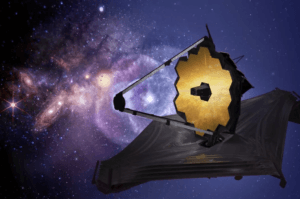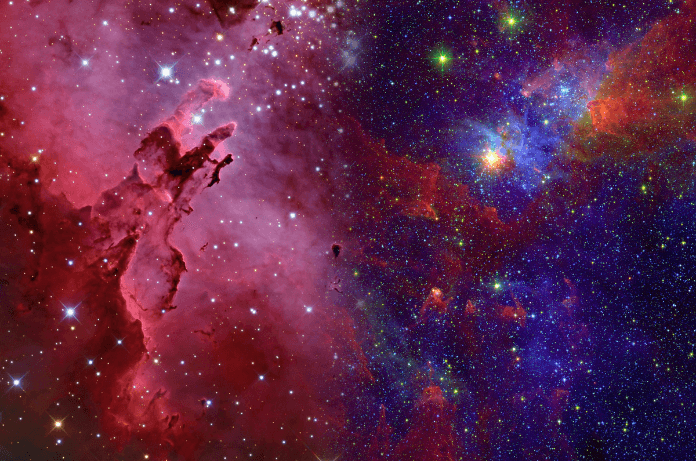Imagine for a moment you are holding a map. It’s supposed to guide you through the landscape of the universe, offering a reliable route to understanding its origins, growth, and future. But what if you discovered that despite following the directions perfectly, something doesn’t quite line up? This is exactly the kind of puzzle that astronomers are facing right now with the universe’s expansion rate, known as the Hubble Constant. The mystery? The universe is expanding faster than it should be and the latest findings from the James Webb Space Telescope (JWST) have just confirmed that this puzzle, known as the Hubble Tension, is not going away.
What’s causing this expansion discrepancy? Is there a new force or phenomenon lurking in the cosmos, hidden from our current understanding of physics? Could this be the beginning of a groundbreaking discovery that reshapes what we know about the universe? Let’s dive into this cosmic enigma, the discoveries of Adam Riess and his team, and what it might mean for the future of cosmology.
What is the Hubble Tension and Why Should You Care?
The Hubble Constant represents the rate at which the universe is expanding. It’s measured in kilometers per second per megaparsec (km/s/Mpc), with one megaparsec being a mind-blowing 3.26 million light-years. In simple terms, the Hubble Constant tells us how quickly galaxies are drifting away from us as space itself expands.
For decades, scientists using different methods have come up with slightly different values for this Hubble Constant:

- The Hubble Space Telescope‘s observations of nearby galaxies suggest a value of about 72-73 km/s/Mpc.
- On the other hand, data from the cosmic microwave background (CMB) and the faint glow left over from the Big Bang gives a lower estimate of 67-68 km/s/Mpc.
This 5-6 km/s/Mpc difference might sound small, but in the context of the vast universe, it’s huge. This inconsistency has perplexed scientists for over a decade. Is it due to measurement errors, or does it point to a fundamental gap in our understanding of the universe?
Webb Steps In High-Definition Cosmology
The James Webb Space Telescope, launched in December 2021, has now added critical data to the mix. Webb’s incredible infrared vision allows it to see deeper into the universe, offering unprecedented clarity when measuring the distances to far-off galaxies.
In a recent study published in The Astrophysical Journal, Adam Riess, a Nobel laureate and distinguished professor at Johns Hopkins University, and his team used Webb to double-check the Hubble Space Telescope’s measurements. Their findings? The numbers from Webb and Hubble align perfectly. Webb measured a Hubble Constant of 72.6 km/s/Mpc, nearly identical to Hubble’s value of 72.8 km/s/Mpc.
This crucial cross-check means the discrepancy cannot be explained by simple errors in measurement.
Why This Matters: Cracks in the Standard Model
The Hubble Tension isn’t just an academic debate. It challenges the Standard Model of Cosmology, the theoretical framework that explains the universe’s structure and evolution. The Standard Model successfully describes:
- The distribution of galaxies.
- The cosmic microwave background radiation.
- The abundance of different elements formed after the Big Bang.
But it falters when explaining this expansion rate mismatch.
As Marc Kamionkowski, a cosmologist from Johns Hopkins University, points out: “The discrepancy between the observed expansion rate of the universe and the predictions of the standard model suggests that our understanding of the universe may be incomplete.”
If our models don’t fully account for the expansion rate, there may be missing physics we have yet to discover. Could it be a new form of energy, like an early version of dark energy that gave the universe a kickstart? Could mysterious properties of dark matter be involved? These are not just wild ideas they are serious scientific possibilities. However, it does not fully explain the nature of dark matter and dark energy, mysterious components of the universe estimated to be responsible for 96% of its makeup and accelerated expansion
Dark Energy: The Phantom Force Accelerating the Universe
Let’s not forget that Adam Riess is no stranger to cosmic mysteries. His Nobel Prize-winning work in 1998 showed that the universe’s expansion is accelerating due to a mysterious force known as dark energy. This energy makes up about 70% of the universe, yet we know almost nothing about it.
Now, with Webb’s data confirming Hubble’s measurements, dark energy’s role in the Hubble Tension becomes even more intriguing. Could this tension hint at new forms of dark energy or other unknown forces at play in the cosmos?
Exploring the Data: Precision Like Never Before
To achieve these results, Riess’ team used Webb’s largest dataset so far, collected over its first two years in space. They focused on galaxies previously studied by Hubble and relied on three primary methods:
- Cepheid Variables – Stars that pulsate predictably and are the gold standard for measuring cosmic distances.
- Carbon-Rich Stars – Bright and reliable distance markers.
- Red Giant Stars – The brightest of these giants also serve as reliable cosmic yardsticks.
Their precision was astonishing. Even with a dataset covering just a third of Hubble’s sample, they narrowed the discrepancy to under 2% far smaller than the 8-9% difference that defines the Hubble Tension.
What’s Next? A Universe Full of Possibilities
The confirmation of the Hubble Tension means we are standing at the edge of discovery. As Marc Kamionkowski suggests: “Theorists have the license to get pretty creative.”
New explanations might include:
- Early Dark Energy A force that briefly boosted the universe’s expansion shortly after the Big Bang.
- Exotic Particles – Unseen particles that influence cosmic dynamics.
- Primordial Magnetic Fields – Ancient magnetic forces that could tweak the universe’s expansion.
The Hubble Tension might just be the tip of the iceberg, hinting at even more discrepancies in our cosmological understanding. Resolving it could open the door to new physics and redefine how we see the universe.
The Cosmos Awaits
While the Hubble Constant doesn’t impact our daily lives, it’s a key that unlocks the story of the universe, its past, present, and future at an extremely large scale. Scientists use this value to map the blueprint of the universe, deepen their understanding of its state 13-14 billion years after the Big Bang, and calculate other fundamental aspects of the cosmos. The alignment of data from both James Webb and Hubble Space Telescopes confirms that the puzzle is real, not an error.
This challenge is also an opportunity to discover new aspects of the cosmos, from dark energy to exotic particles. As we explore further, one thing is certain: the universe still holds many secrets, and we are just beginning to uncover them.

